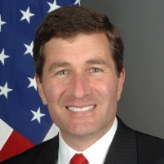Monaco
Monaco is a small country on the French Riviera, located near France’s border with Italy. The region was associated with Hercules and was rumored to be a stopover on his historic journeys. Monaco was under Roman control until the collapse of the Holy Roman Empire and then was ravaged by barbarian tribes for close to three centuries. The Ligurians then populated the area, leading to the building of a fortress atop the Rock of Monaco, which became a strategic military stronghold that attracted settlers from Genoa. From 1297 to the present day, Monaco has been ruled by the House of Grimaldi, except for the years when the country was under French rule. Monaco was also ruled briefly by Sardinia, before achieving its independence in 1861. Perhaps the country’s greatest fame came when American film actress Grace Kelly married Monaco’s Prince Rainier in 1956. She served in this capacity until her death in 1982. Prince Rainier died in April 2005, and his son, Prince Albert II formally assumed the throne.
Lay of the Land: Nestled on the French Riviera east of Nice and a few miles west of the Italian border, Monaco is surrounded on three sides by France and on the fourth by the Mediterranean.
Archeological evidence dates Monaco’s earliest inhabitants to about 300,000 BC, when inhabitants of the Paleolithic era used the Rock of Monaco as shelter. The area’s earliest inhabitants were mountain-dwelling Ligures, who emigrated from Genoa, Italy.
The United States’formal relations with Monaco began in 1993, when the country joined the United Nations. The two also participate in UNESCO and the World Health Organization together.
Although the United States does not have a diplomatic mission in Monaco (the embassy is located in France), the two countries enjoy excellent relations.
Given its tiny size, Monaco conducts a healthy amount of trade with the United States. The US imported a total of $38.7 million of goods from Monaco in 2009, and exported $16.8 million, leading to a trade deficit of -$21.9. By contrast, the US had a positive balance of trade $40.5 million in 2008.
For the most part, the State Department does not have a lot to report about Monaco’s human rights record, which overall is healthy. US officials do point out that citizens do not have the right to change their government under the monarchist form of government. The sole authority to change the government and initiate laws rests with the prince. The 1962 Constitution can be revised by common agreement between the prince and the elected National Council.
 Maccario Doyle, Maguy
Maccario Doyle, Maguy
Maguy Maccario Doyle was appointed the Principality of Monaco’s ambassador to the United States on November 12, 2013, and presented her credentials to President Barack Obama on December 3, 2013. It’s the first ambassadorial post for Maccario Doyle and she is only the second person to hold the post.
Maccario Doyle attended New York’s Parsons School of Design, graduating with a bachelor of arts degree. She joined Monaco’s tourism office in New York in 1976, becoming head of the Monaco Tourism Board in North America in 1994. Her biggest project in that role was a series of events in 2007 celebrating the life of Princess Grace, who gave up her career as a Hollywood actress to marry Prince Rainier of Monaco, raising money for the Princess Grace Foundation-USA.
In 1995, Prince Rainier III appointed Maccario Doyle consul in New York and two years later she was named Monaco’s consul general, a position she held until being named to the Washington post. Most of her time in that role was spent strengthening tourism and cultural connections between Monaco and the United States.
Maccario Doyle, who is active in New York and Washington social circles, has two daughters, Kim and Gabby.
-Steve Straehley
To Learn More:
- Table of Contents
- News
- Overview
- Basic Information
- History
- Newspapers
- History of U.S. Relations with Monaco
- Current U.S. Relations with Monaco
- Where Does the Money Flow
- Controversies
- Human Rights
- Debate
- Past Ambassadors
- Ambassador to the U.S.
- Embassy Web Site in the U.S.
- Comments
- Leave a comment
U.S. Ambassador to Monaco

Who says President Barack Obama isn’t a traditionalist? The man who promised change in Washington has decided to continue the long-held habit of presidents reserving the post of ambassador to France for, well, anyone but career diplomats. Only one of the last twelve U.S. ambassadors to France (Arthur Hartman under Jimmy Carter) has been a Foreign Service officer. The others have all been what is politely known as “non-career appointees.” Both of President George W. Bush’s ambassadors, Howard Leach and Craig Roberts Stapleton, were major Republican Party fundraisers. Now, the ambassadorship goes to Charles Hammerman Rivkin, one-time head of the Muppets empire, who helped raise hundreds of thousands of dollars for Obama in 2008.
Rivkin is not the only member of his family to receive an appointment from Obama. His brother, Robert, was selected to be general counsel for the Department of Transportation, and Robert’s wife, Cindy S. Moelis, a close friend of Michelle Obama, was chosen to direct the Commission on White House Fellows.
more
Monaco is a small country on the French Riviera, located near France’s border with Italy. The region was associated with Hercules and was rumored to be a stopover on his historic journeys. Monaco was under Roman control until the collapse of the Holy Roman Empire and then was ravaged by barbarian tribes for close to three centuries. The Ligurians then populated the area, leading to the building of a fortress atop the Rock of Monaco, which became a strategic military stronghold that attracted settlers from Genoa. From 1297 to the present day, Monaco has been ruled by the House of Grimaldi, except for the years when the country was under French rule. Monaco was also ruled briefly by Sardinia, before achieving its independence in 1861. Perhaps the country’s greatest fame came when American film actress Grace Kelly married Monaco’s Prince Rainier in 1956. She served in this capacity until her death in 1982. Prince Rainier died in April 2005, and his son, Prince Albert II formally assumed the throne.
Lay of the Land: Nestled on the French Riviera east of Nice and a few miles west of the Italian border, Monaco is surrounded on three sides by France and on the fourth by the Mediterranean.
Archeological evidence dates Monaco’s earliest inhabitants to about 300,000 BC, when inhabitants of the Paleolithic era used the Rock of Monaco as shelter. The area’s earliest inhabitants were mountain-dwelling Ligures, who emigrated from Genoa, Italy.
The United States’formal relations with Monaco began in 1993, when the country joined the United Nations. The two also participate in UNESCO and the World Health Organization together.
Although the United States does not have a diplomatic mission in Monaco (the embassy is located in France), the two countries enjoy excellent relations.
Given its tiny size, Monaco conducts a healthy amount of trade with the United States. The US imported a total of $38.7 million of goods from Monaco in 2009, and exported $16.8 million, leading to a trade deficit of -$21.9. By contrast, the US had a positive balance of trade $40.5 million in 2008.
For the most part, the State Department does not have a lot to report about Monaco’s human rights record, which overall is healthy. US officials do point out that citizens do not have the right to change their government under the monarchist form of government. The sole authority to change the government and initiate laws rests with the prince. The 1962 Constitution can be revised by common agreement between the prince and the elected National Council.
 Maccario Doyle, Maguy
Maccario Doyle, Maguy
Maguy Maccario Doyle was appointed the Principality of Monaco’s ambassador to the United States on November 12, 2013, and presented her credentials to President Barack Obama on December 3, 2013. It’s the first ambassadorial post for Maccario Doyle and she is only the second person to hold the post.
Maccario Doyle attended New York’s Parsons School of Design, graduating with a bachelor of arts degree. She joined Monaco’s tourism office in New York in 1976, becoming head of the Monaco Tourism Board in North America in 1994. Her biggest project in that role was a series of events in 2007 celebrating the life of Princess Grace, who gave up her career as a Hollywood actress to marry Prince Rainier of Monaco, raising money for the Princess Grace Foundation-USA.
In 1995, Prince Rainier III appointed Maccario Doyle consul in New York and two years later she was named Monaco’s consul general, a position she held until being named to the Washington post. Most of her time in that role was spent strengthening tourism and cultural connections between Monaco and the United States.
Maccario Doyle, who is active in New York and Washington social circles, has two daughters, Kim and Gabby.
-Steve Straehley
To Learn More:
Comments
U.S. Ambassador to Monaco

Who says President Barack Obama isn’t a traditionalist? The man who promised change in Washington has decided to continue the long-held habit of presidents reserving the post of ambassador to France for, well, anyone but career diplomats. Only one of the last twelve U.S. ambassadors to France (Arthur Hartman under Jimmy Carter) has been a Foreign Service officer. The others have all been what is politely known as “non-career appointees.” Both of President George W. Bush’s ambassadors, Howard Leach and Craig Roberts Stapleton, were major Republican Party fundraisers. Now, the ambassadorship goes to Charles Hammerman Rivkin, one-time head of the Muppets empire, who helped raise hundreds of thousands of dollars for Obama in 2008.
Rivkin is not the only member of his family to receive an appointment from Obama. His brother, Robert, was selected to be general counsel for the Department of Transportation, and Robert’s wife, Cindy S. Moelis, a close friend of Michelle Obama, was chosen to direct the Commission on White House Fellows.
more







Comments